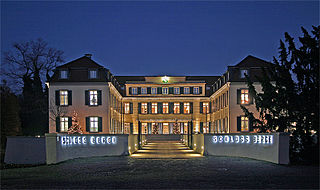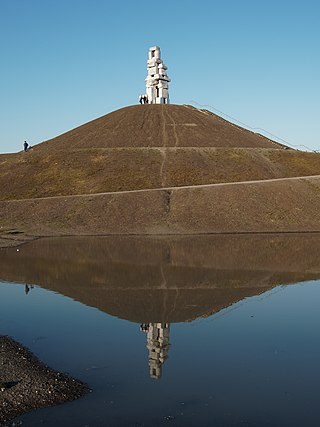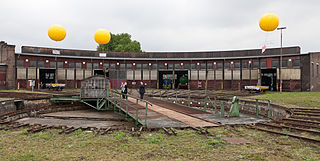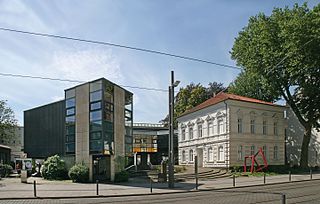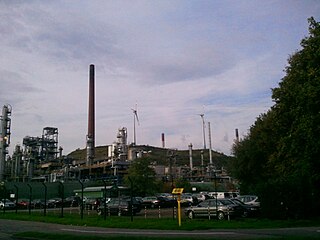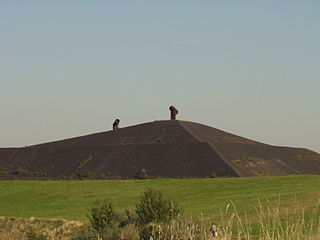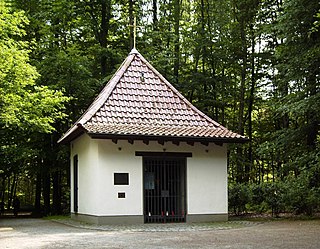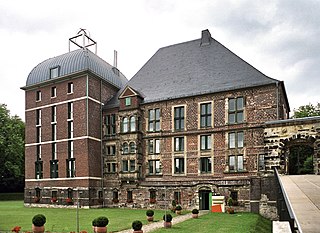12 Sights in Gelsenkirchen, Germany (with Map and Images)
Legend
Welcome to your journey through the most beautiful sights in Gelsenkirchen, Germany! Whether you want to discover the city's historical treasures or experience its modern highlights, you'll find everything your heart desires here. Be inspired by our selection and plan your unforgettable adventure in Gelsenkirchen. Dive into the diversity of this fascinating city and discover everything it has to offer.
1. Monument for a forgotten future
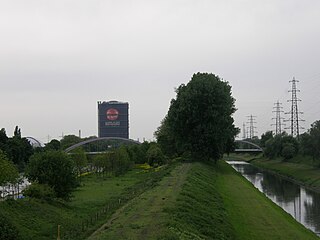
Emscherkunst.2010, self -writing Emscherkunst.2010, was, according to his own statement, the largest art project in the public spaces of the Culture Capital of Europe Ruhr, 2010. Under the direction of curator Florian Matzner and a project office, more than forty artists and students from the Münster Art Academy deal against the background of structural change with the conditions of the region in the northern Ruhr area.
2. Schloss Berge
Berge Castle, also known as Haus Berge, is located on the south side of the Buerschen Berg in the Gelsenkirchen district of Buer in North Rhine-Westphalia. It was built as a moated castle to protect today's Gelsenkirchen district of Erle and was the ancestral seat of the von Berge family until 1433. From 1521, Haus Berge was the property of the von Boenen family, whose member Ludolf Friedrich Adolf von Boenen rose to the rank of imperial count. His daughter Maria Anna Wilhelmine, a lover of Beethoven, was born on Berge.
3. Halde Rheinelbe
The Rheinelbe slag heap is an approx. 100 m above sea level high slag heap in Wattenscheid-Leithe. It is located there on Leithestraße near the Halfmannshof. The Rheinelbe slag heap is very popular with dirt bike, downhill and freeride riders, who have built various routes outside the normal paths over time.
4. Sankt Urbanus
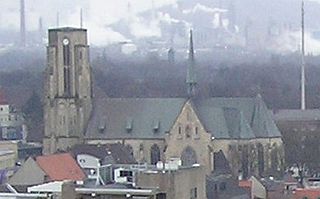
The Provost's Church of St. Urbanus is the main Catholic church of Gelsenkirchen-Buer. It was built from 1890 according to plans by Bernhard Hertel and consecrated on 10 October 1893 by the Bishop of Münster, Hermann Dingelstad.
Wikipedia: Propsteikirche St. Urbanus (DE), Website, Website
5. Lokomotivschuppen Bw Gelsenkirchen Bismarck
The Gelsenkirchen-Bismarck locomotive depot is located at the Bismarck freight yard in the Gelsenkirchen Zoo section, opposite the Gelsenkirchen Zoo station, on the Märkische Emschertalbahn. It was in operation from 1926 to 1981 and is now the largest surviving old locomotive depot for steam locomotives in the Ruhr area.
6. Kunstmuseum Gelsenkirchen
The Kunstmuseum Gelsenkirchen is a municipal museum in Gelsenkirchen-Buer, Germany. In addition to the art of the first half of the 20th century, an extensive collection of kinetic art forms the focus of the house. For a long time, the house was simply called the "Municipal Museum". On 27 August 2008, the cultural committee of the city of Gelsenkirchen decided to rename the museum "Kunstmuseum Gelsenkirchen". Admission is free.
7. Halde Oberscholven
The Oberscholven slag heap is a slag heap in Gelsenkirchen-Scholven. In the years 1966 to 1987, it took up the tailings from the operation of the Scholven, Bergmannsglück and Emscher-Lippe mines. The slag heap towers over the surrounding area by 140 m and is thus the highest artificial elevation in the Ruhr area.
8. Halde Rungenberg
The Rungenberg slag heap is a 115.3 m high colliery slag heap in Gelsenkirchen. It was created by mining in the Hugo colliery. The slag heap is one of the burning slag heaps, is mostly regreened, partly wooded and invites you to take a walk. Since the beginning of 2021, it has been owned by the Ruhr Regional Association.
9. ZOOM Erlebniswelt Gelsenkirchen
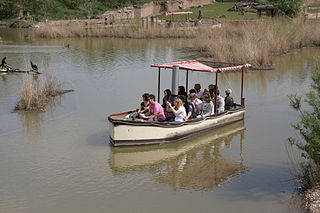
ZOOM Erlebniswelt Gelsenkirchen, founded on April 14, 1949, as "Ruhr-Zoo", is one of the most modern zoological gardens in Germany. It was founded on a heavily shelled area in Gelsenkirchen adjacent to a port on the Rhine–Herne Canal. It initially encompassed 15.5 hectares. During its first years, there was a large turnover of animals as an animal trader, Firma Ruhe, provided them.
10. Bleckkirche
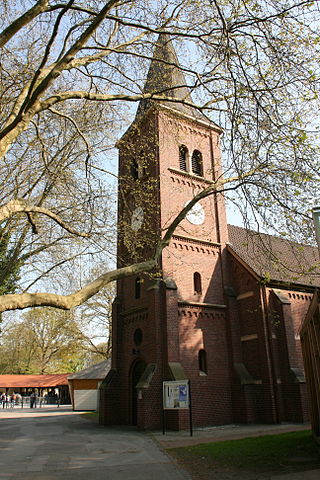
The Bleckkirche is a listed church building in Bismarck, a district of Gelsenkirchen in North Rhine-Westphalia. It is located in the immediate vicinity of the Zoom Erlebniswelt. The name of the church is derived from the field name "Auf dem Bleck", which refers to a low, sandy elevation.
11. Siebenschmerzen-Kapelle
The Seven Sorrows Chapel is a chapel of the Virgin Mary in the Westerholt Forest (Löchterheide) in Gelsenkirchen-Buer. Built in 1723 and renovated in 1948, the small church with the patronage of the Sorrows of Mary belongs to the parish of St. Mary's Assumption within the parish of St. Urbanus. It is still used today for processions and services in the open air and for private worship. Since 2008, the Via Matris station path with bronze plaques by H. Schilcher (Oberammergau) has been located next to the chapel.
12. Gelsenkirchen Schloss Horst
Horst Castle, located in the Horst district of Gelsenkirchen, is recognized as one of Westphalia's oldest and most significant Renaissance buildings. During its construction in the 16th century, it ranked among the largest four-winged castle complexes north of the Alps, significantly influencing the architectural style of the Lippe Renaissance. On 15 December 1983 it was declared a listed building.
Share
How likely are you to recommend us?
Disclaimer Please be aware of your surroundings and do not enter private property. We are not liable for any damages that occur during the tours.
